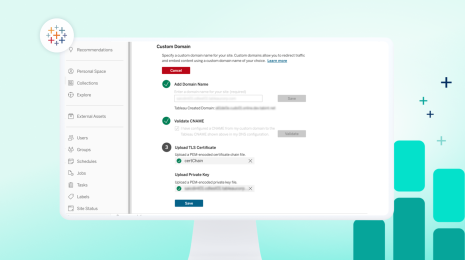First comes agility, then competitive edge with cloud analytics

With the cloud now mainstream, we’re at the forefront of the next precipice of cloud computing, says Ashwin Viswanath of Informatica.
“Cloud analytics has now come to the forefront as well,” says Ashwin, who shared his insights during a recent webinar.
In its beginning days, cloud was seen as a cost-cutting tool. Now the top reason organizations embrace the cloud is business agility, according to a 2014 Forrester survey. Other factors like speed to deployment and lower costs now rank lower.
So how does cloud improve business agility? I think we first need to define what business agility is. Wikipedia defines business agility as “the ability of an organization to rapidly adapt to market and environmental changes in productive and cost-effective ways.” In that framework, cloud applications are fast in several ways.
First, they are fast to change the physical environment in an economical way. With just a few clicks, you can scale up the environment, add new compute or new data, or put data in new data store type where it would be better handled. This eliminates the expense and time of doing the same in a physical environment.
Second, they are fast to bring in new data. In a cloud environment, you are open do what you want to do without affecting other applications. So you can simply add new data or data types as needed. This allows companies to find those new insights in new data in hours instead of months.
Last but not least is the time to results. Since you can move quickly in the cloud, you can determine value much faster. So you can succeed—or fail—fast. Either way, the investment in the project is much lower, which allows you to take greater risks.
When a company’s cloud solutions benefit its customers, the cloud evolves from a mere operational tool into a transformational agent. And when that happens, business agility results in a competitive advantage, says Ashwin.
Companies Can Respond to Customers Faster
Customer responsiveness requires faster insights. And you may have to integrate information to get the full picture. Maybe you want to know whether it’s the right time to upsell a customer, or to extend credit terms. Maybe you want to know whether anyone on your list of prospects has tweeted negatively about you.
Data is continuously coming at us, and it is valuable. The trick is being able to get to that data, use it, and find time-limited insights. As a data source and as a destination, the cloud opens up the opportunity to move at the speed of life and get a clear, in-depth view of the customer. In today’s world, the ability to quickly respond to customers' needs is a huge competitive advantage.
The Two Pillars of Cloud Analytics
But where do you get the data for cloud analytics? You likely have to herd data from different corners of your organization. With cloud analytics, pulling together all your data becomes possible. Many solutions accommodate all kinds of data scenarios, be it on-premise data, cloud data, or a hybrid approach that includes both.
That’s where integration comes into play. Let’s say you want to look at monthly sales numbers by product category. You likely have to pull together your product SKUs and product prices from different databases.
In order to have cloud analytics, you first need cloud integration and cloud business intelligence. Those are the two pillars of cloud analytics. Cloud integration means going beyond just pulling all the data together. It also involves aggregating, transforming, and cleaning the data to make it useful for analysis. With the prepared data, you can then analyze all of your data in the cloud.
How Cloud Analytics Provides a Competitive Advantage
To gain a competitive advantage through cloud analytics, leverage all the new forms of customer data available. Look for ways to better understand the customers. And look for ways to better service your customers based on what you find.
Social media data, for example, enables sentiment analysis. In-store sensor data helps track movements. Website data shows which items customers click on, and at which points they click away. Smartphones and wearables provide even more data points.
You can pull all of this information into your cloud analytics tool, and ask and answer questions of your data in real-time. And with an interactive dashboard, your entire organization can do the same as well.
With more data points and faster insights, cloud analytics can help you understand your customers’ wants and needs, gain a competitive edge, and eventually transform your business.
If you haven’t yet, try Tableau Online for free.
To hear more from Ashwin on cloud analytics, check out our webinar.








